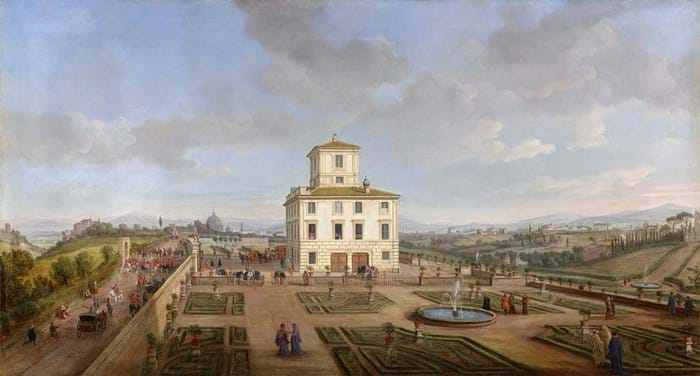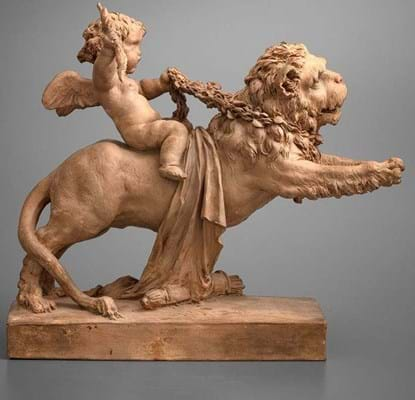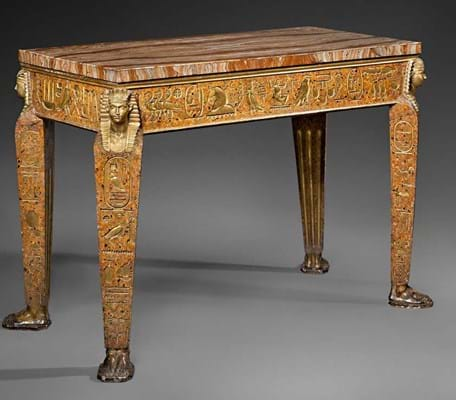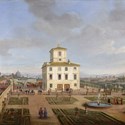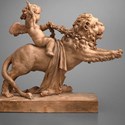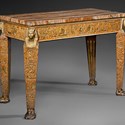Nicholas Hall’s latest exhibition, with a luxurious collection of objects, celebrates the man who single-handedly launched a vogue for 18th century Roman art among mid-century US collectors.
Running until November 30 at Hall’s New York gallery, Hub of the World: Art in 18th Century Rome celebrates the collector and museum professional Anthony Clark (1923-76). Held in collaboration with Galleria Carlo Orsi of Milan, the show brings together more than 60 works including Old Master paintings, drawings, sculptures and decorative objects.
Clark was born in Philadelphia and worked at the Rhode Island School of Design, the National Gallery of Art in Washington, DC, the Metropolitan Museum of Art in New York and the Minneapolis Institute of Arts. At the last two institutions, he made major acquisitions from the Roman Settecento, particularly the works of painter Pompeo Battoni (1708-87).
These works had been considered weak successors to the products of the earlier Baroque age.
For Clark, however, the 18th century held its own delights, created at a time when Rome was still at the heart of European society, a place attracting international talent, harbouring a host of wealthy patrons and giving rise to new ideas. Clark’s passion for the field extended beyond paintings to drawings and three-dimensional works, and as a curator his strove to create context for the works – unusually for the day – by giving them equal status.
Hall never met the man himself. “There’s no one who remembers him any more outside of real veterans,” he tells ATG. “My first position was at Colnaghi, and Clark and Colnaghi were friendly.”
Even so, Hall felt that on his centenary year Clark’s legacy is important enough to deserve proper attention. While Hall focuses on works of art, Orsi concentrates on three-dimensional objects.
Around 30% of the objects are on loan, including Clark’s notebooks which come to the Upper East Side gallery from the National Gallery of Art Library. The remaining 70% of the show is for sale at prices ranging from $5000 for a caricature to around $1m or $2m for major landscapes. Many of the works are available for prices of around $30,000-130,000.
Even before the show opened there was robust interest from buyers, with several items already sold and several institutions in discussions with the gallery.
Villa winner
Highlights include a pair of oil on coppers by Angelika Kauffmann, a caricature by Joshua Reynolds, a console table designed for the Egyptian Room in the Palazzo Borghese and the ‘Rockingham Silenus’, a 1st century sculpture reworked by Bartolomeo Cavaceppi (c.1716-99).
Headlining the show is View of the Villa Medicis by Hubert Robert (1733- 1808), on loan from the Assadour O Tavitian Trust.
For Hall, the purpose of the show is partly to remind the art-buying world of the strength that remains in the field of Old Master pictures.
“The market needs dealers to take a stand against the slightly negative viewpoint of where the market is trending and the fear that Old Masters, or anything pre-1900, is at an end,” he says. “I don’t think that’s the case.”
However, there is a danger that “it becomes a self-fulfilling prophecy” if dealers don’t take action “to invigorate the market”.
Eighteen months in the making, the exhibition is aimed to be both scholarly and spectacular, rich in its presentation with an extensive catalogue of items.
As personal favourites Hall mentions view of The Casino of Cardinal Annibale Albani on the Via Aurelia from 1719 by Caspar van Wittel or Vanvitelli. It shows Pope Clement XI visiting the cardinal - his nephew - with a view of Rome in the background.
“It really conveys what it was like to be in Rome at the time,” he says. “It gives you a sense of what it was like to spend a day there in the 18th century.”


